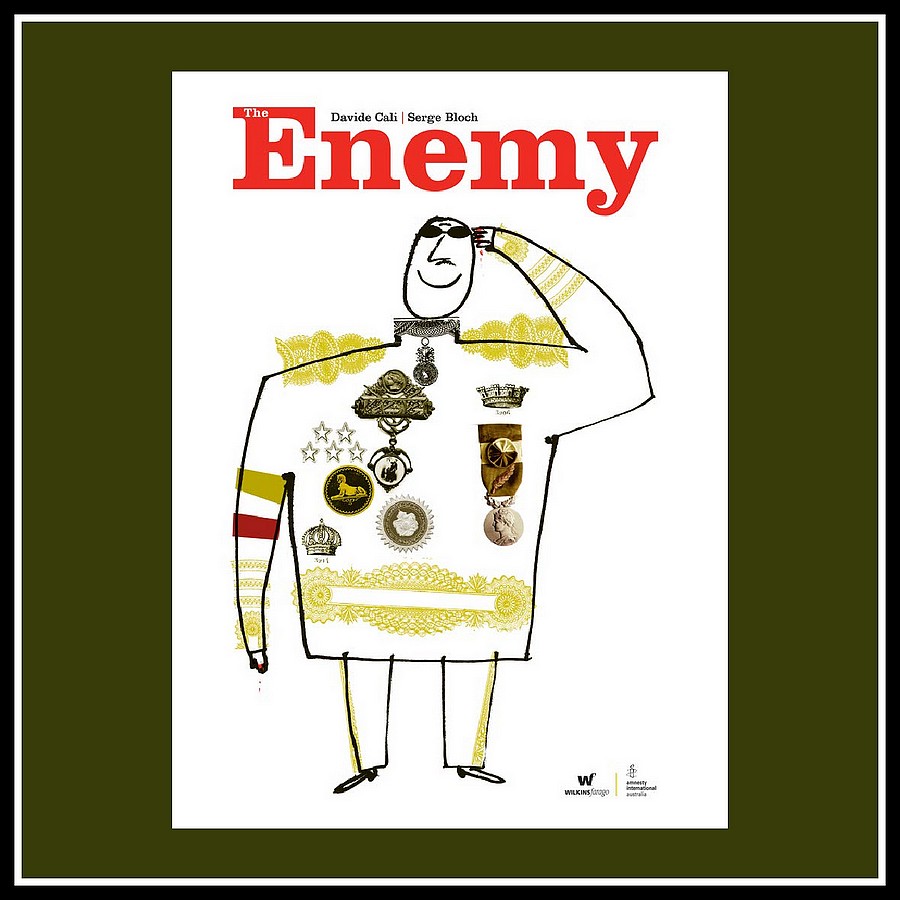
The Enemy by Davide Cali, illustrated by Serge Bloch and published by Wilkins Farago, in association with Amnesty International Australia is a powerful picture book for older readers, set in a barren desert during wartime; there are two holes, each inhabited by a soldier and they are enemies. This story, with sparse text is told from the point of view of one of the soldiers where he shares his thoughts, assumptions and observations about the enemy. His only knowledge about the enemy has come from his army manual. He talks about his loneliness, isolation, his hunger, dwindling food supplies, paranoia about the enemy and how this affects his choices and actions and his staunch beliefs about the enemy, who he knows from his manual to be “…a savage beast. He knows no pity…The war is his fault”. The manual dehumanises the enemy. He sees a distinct difference between himself and the enemy and very few commonalities that they might share.
Under the cover of darkness, the soldier uses a disguise to approach the enemy and crosses paths with a “lion”. It is on this mission that the soldier comes to learn about his enemy, through photos the enemy possesses and his manual. The similarities they share are brought into sharp focus.
Serge Bloch’s seemingly simple childlike illustrations are combined with photographic collage, partly created using artefacts from the Museum of the Great War in Péronne, France. The drawings add another layer to the story and depict only one of the soldiers despite the story being about two.
This book is accessible for older children and is a safe context for children to ask questions, think deeply, consider the role propaganda plays and make connections to their world (they might draw parallels to conflict in their own life, not necessarily a war). This is a story about what it means to be human and how learning another person’s story (through them – speaking and listening to them, learning about their history and past) has the potential to dismantle prejudices, biases and intolerances and give way to understanding, compassion and empathy.
